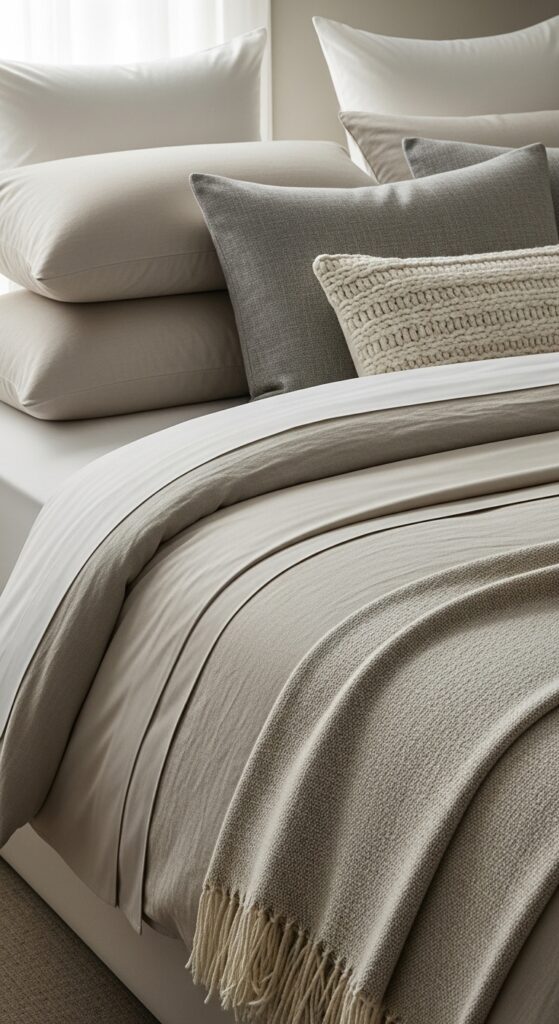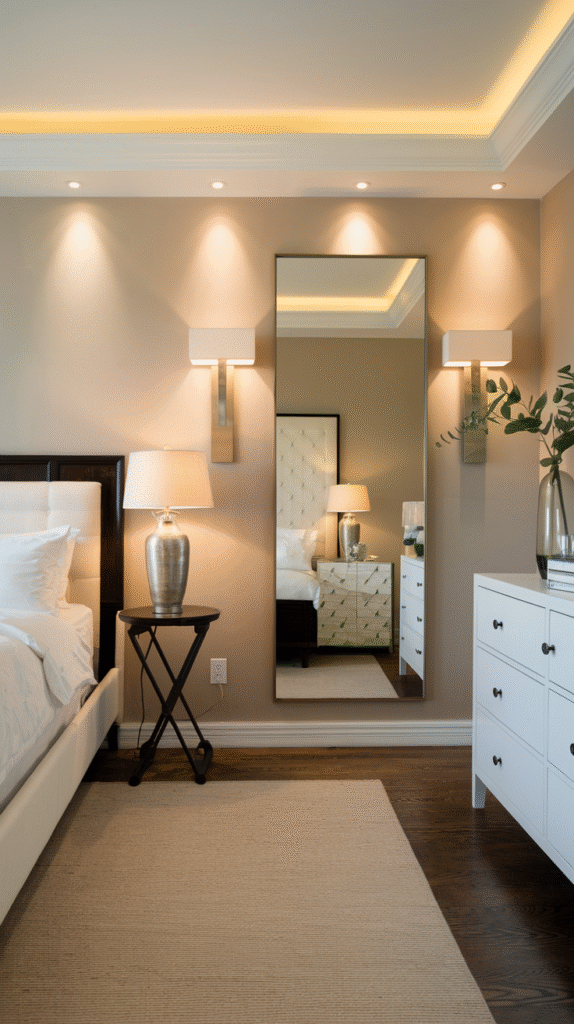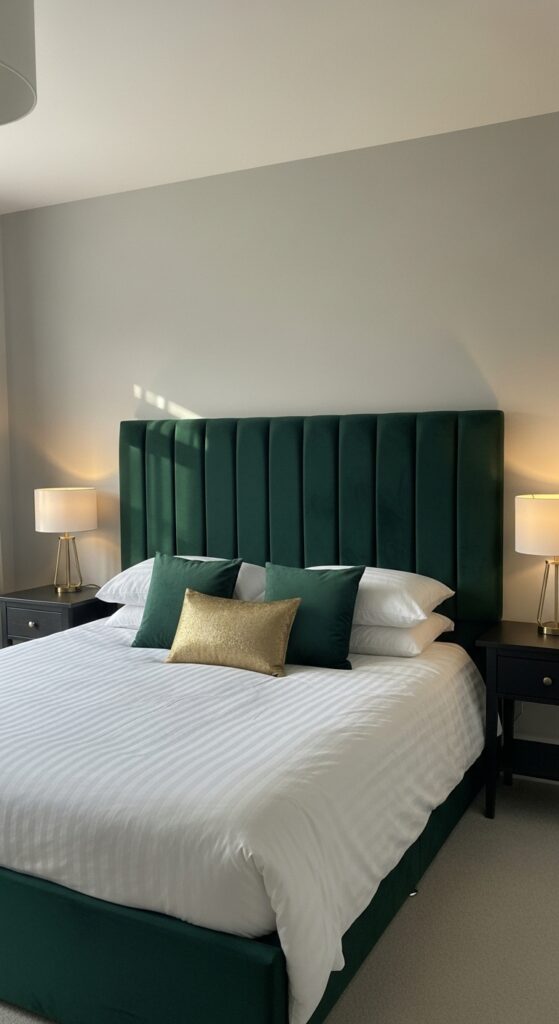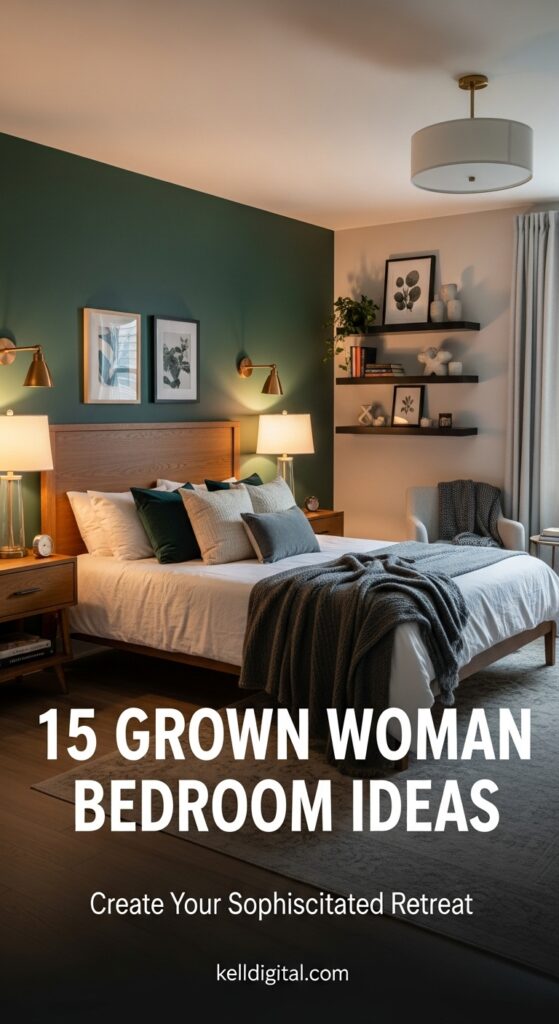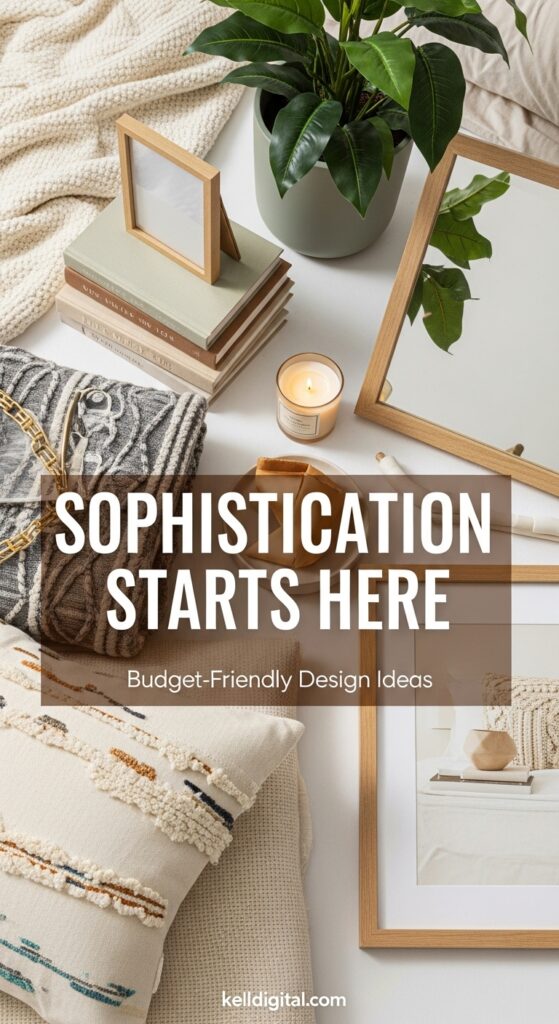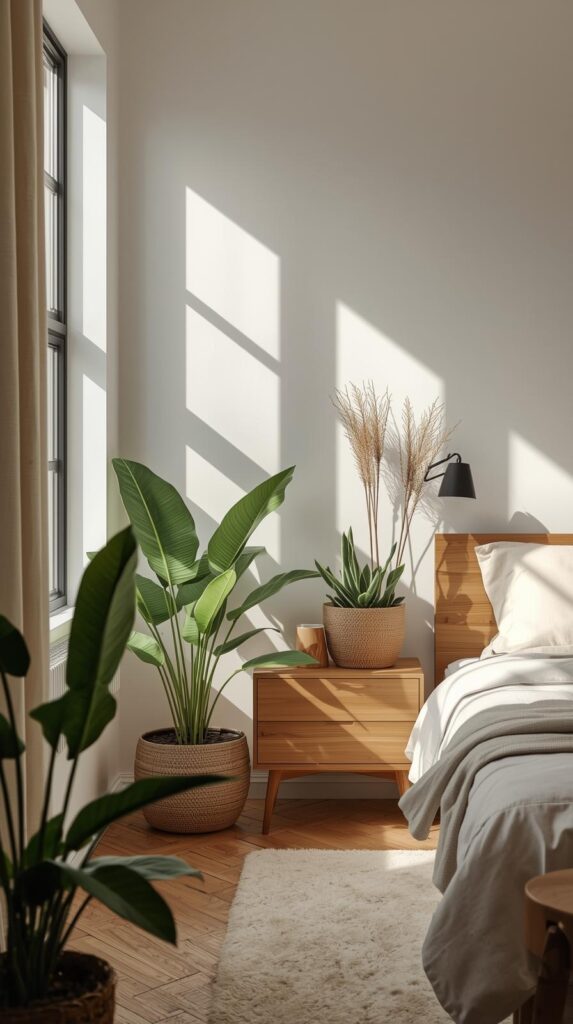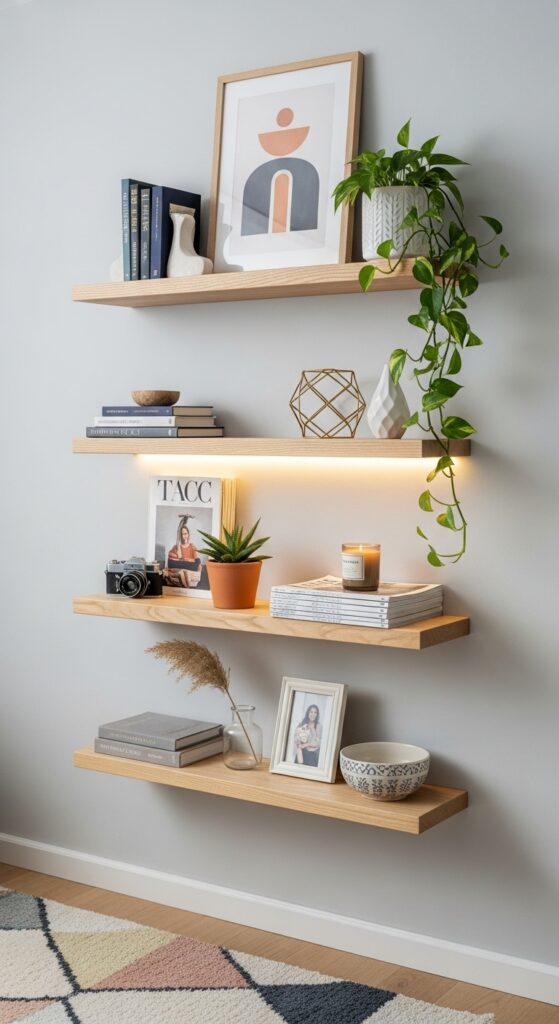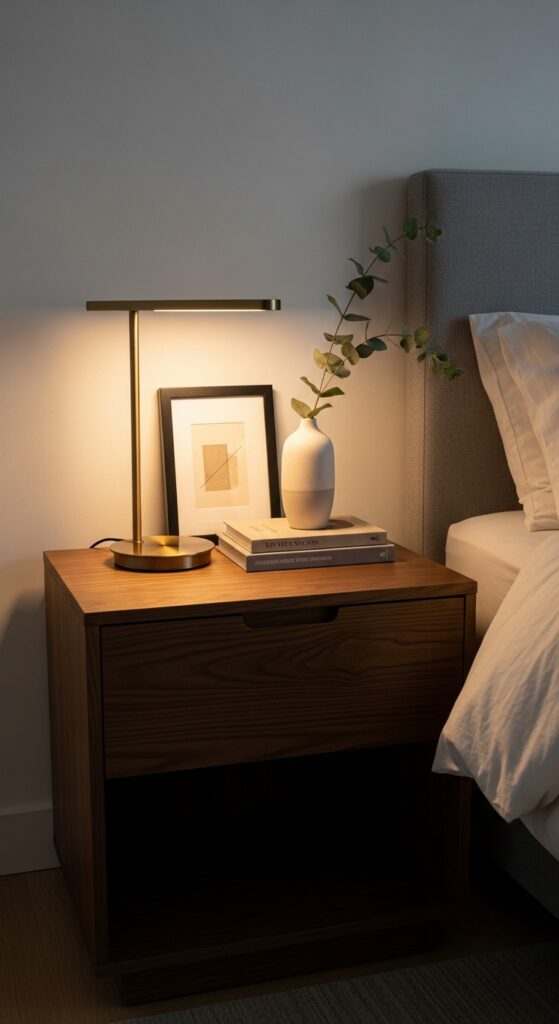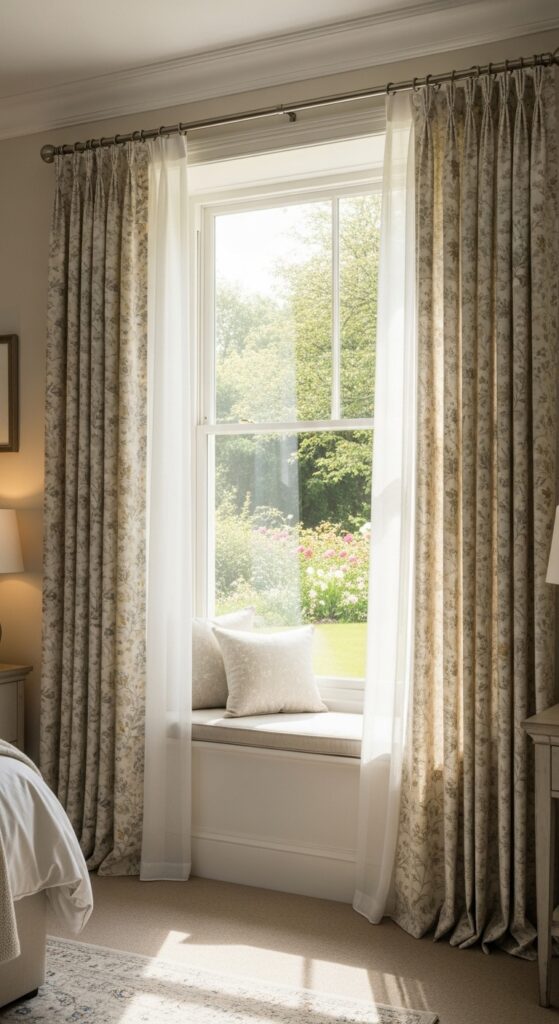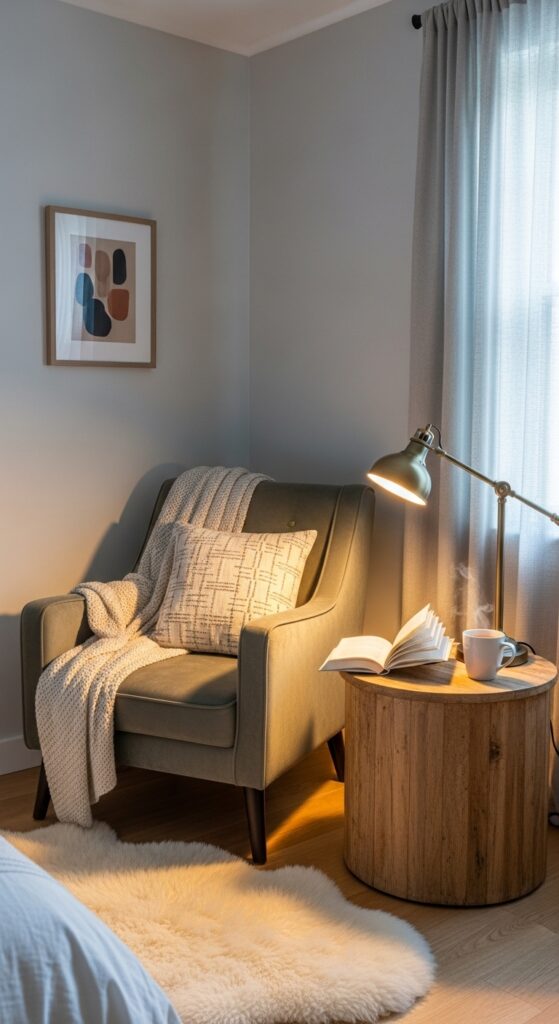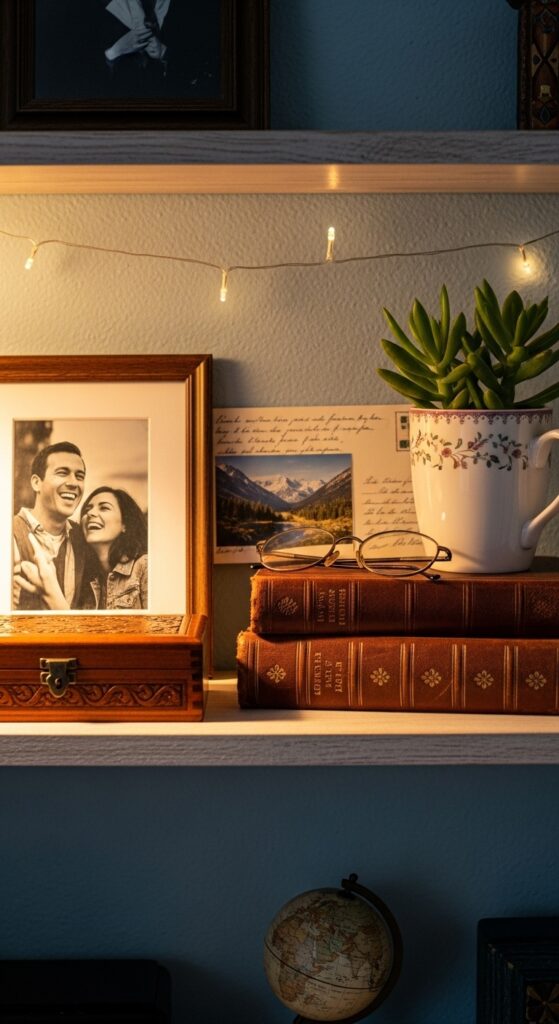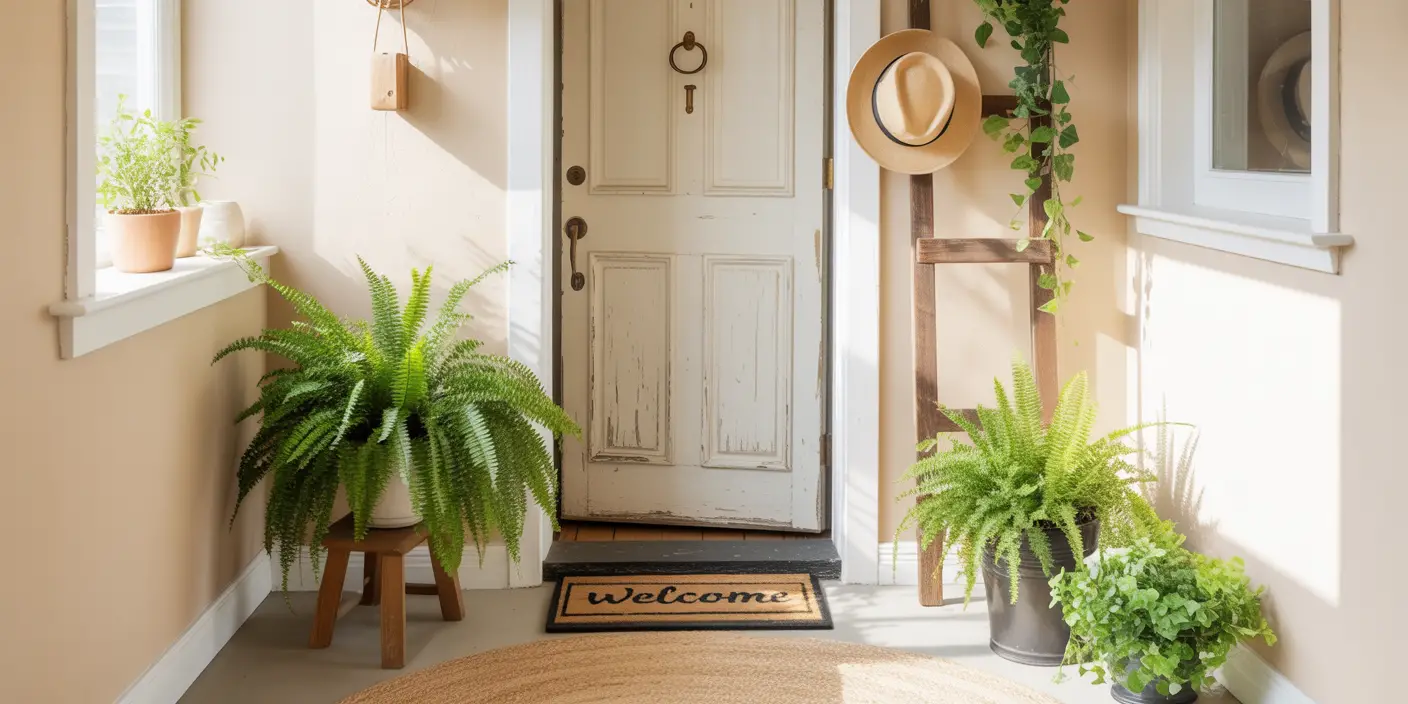Let’s be real—your bedroom should feel like your space, not a college dorm reject pile or something your mom would decorate. You’ve earned the right to wake up somewhere that makes you feel calm, confident, and genuinely happy to be there. Whether you’re completely revamping your room or just tired of looking at that same old setup, this guide will walk you through 15 ideas that’ll transform your bedroom into a sophisticated retreat without breaking the bank.
I’m not talking about those impossible Pinterest rooms that require a trust fund. I’m talking about smart, intentional choices that create impact and actually fit into a real budget. Ready? Let’s go.
1. Invest in Quality Bedding (Seriously, Do This First)
Here’s my controversial take: your bedding matters more than any piece of furniture you’ll ever buy, and most people completely overlook this. You spend a third of your life in bed, but somehow we’re cool dropping $50 on sheets that pill after three washes? No thank you.
Quality bedding doesn’t mean designer labels. It means:
- High thread count sheets (400-600 is the sweet spot—anything higher is marketing fluff)
- Breathable, durable materials like Egyptian cotton or linen blends
- A weighted duvet or quality comforter that actually keeps you warm without feeling like a marshmallow
You’ll notice an immediate shift in how your room feels. Better sleep happens first, but then your bedroom automatically looks more put-together because quality fabrics just photograph better and drape nicer. FYI, mid-range bedding can look just as sophisticated as luxury brands—you just have to know what to look for.
2. Create a Focal Point Wall with Wallpaper or Paint
Forget painting the entire room. One bold accent wall creates drama and sophistication without overwhelming the space. You have options here:
- Deep jewel tones (emerald, sapphire, or burgundy) add instant maturity
- Textured wallpaper brings visual interest and feels more intentional than flat paint
- Warm neutrals (terracotta, sage, soft gray) keep things calm while feeling curated
- Geometric or subtle patterns add personality without screaming “look at me!”
The beauty of a focal point wall? It anchors the entire room and gives you a foundation for everything else. Your eye lands there first, and suddenly your space feels designed rather than thrown together.
3. Layer Your Lighting (This Is Non-Negotiable)
Here’s something I learned the hard way: overhead lighting alone will make even the nicest bedroom look depressing. You need at least three different light sources working together.
- Soft bedside lamps for reading or winding down
- Wall sconces (mounted on either side of the headboard) for ambient light
- A dimmable overhead option so you can adjust based on your mood
- Ambient accents like a small corner lamp or even string lights (yes, adults can have them tastefully)
Your lighting sets the entire mood of the room. Warm, layered lighting makes you feel like you’re in a hotel—which is exactly the vibe you want. Harsh fluorescent overhead lights? That’s a no from me.
4. Choose a Statement Headboard
Your headboard is basically the throne of your bedroom. This doesn’t need to be expensive—it just needs to feel intentional.
Budget-friendly options:
- Upholstered headboards in neutral fabrics
- Wooden slat designs with clean lines
- Floating platforms with built-in shelving
- Even a well-chosen tapestry or fabric hanging can create a DIY headboard effect
The headboard takes up massive visual real estate, so choose something that makes you happy. This is your moment to go slightly bold if you want to. A rich velvet headboard? A sculptural wooden piece? A minimalist platform design? All of these feel grown-up and intentional.
5. Keep the Color Palette Intentional (But Not Boring)
Too many people treat their bedroom like a free-for-all, mixing random colors that fight each other. Instead, choose 2-3 main colors and one accent color and stick with it.
Strong combinations that work:
- Warm white + soft gray + warm gold accents
- Sage green + cream + warm wood tones
- Charcoal + soft blue + brushed silver accents
- Terracotta + off-white + natural wood
The key? Make sure your colors talk to each other. This creates visual cohesion and makes your room feel designed rather than collected. You don’t need every item to match perfectly—just make sure they’re having a conversation, not screaming at each other.
6. Add Texture Through Rugs, Pillows, and Throws
Okay, so this is where your personality gets to shine. Textures are what transform a bland room into a sophisticated retreat. Think about layering:
- A quality area rug (wool or natural fiber) under the bed
- Multiple pillow textures: velvet, linen, knit, faux fur
- Throws draped over the foot of the bed or a chair
- Woven baskets for storage that add visual warmth
This isn’t about having more stuff—it’s about making deliberate choices with what you display. Each texture should feel intentional and contribute to the overall vibe. When someone walks into your room, they should think “oh, she put thought into this,” not “stuff happened here.”
7. Declutter Ruthlessly (The Foundation of Sophistication)
Here’s the thing nobody wants to hear: you can’t have a sophisticated bedroom if it’s cluttered. Period.
Before you add anything new, remove:
- Clothes on the floor or draped on furniture
- Random items on your nightstand
- Books stacked haphazardly
- Anything broken or “just for now”
A sophisticated room breathes. It has negative space. Your eye can rest. Clutter makes even luxury items look cheap because nothing stands out—everything just competes for attention.
This is actually the most budget-friendly upgrade you can make. It’s free and instantly transforms your space.
8. Incorporate Natural Elements and Plants
Plants add life, clean the air, and make your bedroom feel like an actual sanctuary. You don’t need a jungle—just 2-3 well-placed plants that fit your style.
Low-maintenance winners:
- Snake plants (practically indestructible)
- Pothos (trailing and gorgeous)
- Monstera (okay, requires actual care, but worth it)
- Fiddle leaf figs (dramatic and sophisticated)
Pair plants with natural materials like wood furniture, woven baskets, and linen to create a cohesive, calming vibe. Nature-inspired design never feels dated, and it genuinely makes you feel better. IMO, a bedroom without at least one plant feels incomplete.
9. Install Floating Shelves or Wall Styling
Don’t just let your walls sit empty. Floating shelves create functional style and give you space to display things you love.
Style them with intention:
- Books (yes, as decoration, but also because they’re useful)
- Small plants or decorative items
- Framed art or photos (keep it curated—don’t go overboard)
- Soft lighting from a small lamp
The key to styling shelves is restraint. You want it to feel curated, not cluttered. Leave some breathing room. Show off a few things you love rather than cramming everything up there.
10. Upgrade Your Nightstands (Even Simple Ones Work)
Your nightstands set the tone for your room. They’re the first thing you see when you wake up.
Look for:
- Clean lines and quality construction
- Enough surface space for a lamp and maybe one other item
- Drawer or shelf storage to keep things out of sight
- Material that coordinates with your bed frame
You don’t need matching nightstands (honestly, asymmetrical designs feel more intentional), but they should feel like they belong together in style. A well-chosen nightstand from a mid-range brand will outperform a cheap one from a big-box store because it’ll actually last.
11. Hang Artwork and Mirrors Strategically
Art and mirrors do serious heavy lifting in a bedroom. Here’s how to use them:
Mirrors reflect light and make rooms feel bigger. Hang one opposite your window if possible, or above a dresser for both function and style.
Artwork should feel personal. You don’t need expensive pieces—just things that make you happy. Consider:
- A series of smaller framed prints
- One larger statement piece
- Black and white photography for sophistication
- Abstract art that coordinates with your color palette
Keep the arrangement intentional rather than random. Group pieces together instead of scattering them, or create a clean line of matching frames.
12. Choose Furniture That Serves Multiple Purposes
Budget constraint? Multifunctional furniture is your secret weapon. An ottoman with storage becomes extra seating and a place to tuck away blankets. A dresser with a mirror doubles as a vanity. A bench at the foot of your bed adds seating and storage.
The goal is to maximize function without cluttering the space. Each piece should earn its place by doing at least two jobs. This approach keeps your room feeling open while still giving you everything you need.
13. Add Blackout Curtains or Quality Window Treatments
Window treatments do more than look pretty—they control light, sound, and privacy. Blackout curtains aren’t just for people with crazy sleep schedules; they create coziness and help your room feel like a refuge.
Choose:
- Neutral colors that coordinate with your palette
- Quality fabric that hangs well
- Adequate length (they should touch the floor or hover just above it)
- Layers if possible (sheer + blackout creates flexibility)
Good curtains instantly elevate a room. Cheap, thin curtains? They cheapen the whole space. Invest in this if you can.
14. Create a Reading or Relaxation Corner
A sophisticated bedroom gives you space to actually be in it beyond sleeping. Even a small corner works.
You need:
- A comfortable chair (doesn’t have to be expensive, just cozy)
- Soft lighting from a floor or table lamp
- Small side table for coffee or a book
- A throw blanket draped nearby
This corner becomes your retreat. It’s where you read, journal, or just sit and exist without scrolling your phone. Your bedroom becomes an actual sanctuary instead of just a place to sleep and forget about the day.
15. Personalize With Intention (Not Clutter)
Here’s where personal touches separate a beautiful bedroom from a your beautiful bedroom. But there’s an art to this—personalization should feel curated, not random.
Display thoughtfully:
- A few meaningful photographs in matching frames
- A beloved book on your nightstand
- A candle you actually use
- One or two pieces that make you smile
Each item should have a reason for being there. It’s the difference between intentional and cluttered. Your bedroom should feel like it reflects you, but in a way that still feels calm and organized.
Your Sophisticated Retreat Awaits
Building a grown-woman bedroom is about making deliberate choices rather than accumulating stuff. You don’t need unlimited money—you need intention, quality where it counts, and the willingness to let go of things that don’t serve you.
Start with the foundations: quality bedding, good lighting, and a decluttered space. Then layer in the elements that make your room feel like yours. The goal is a space where you genuinely want to spend time, where you feel peaceful, and where you can finally close the door on the day and actually relax.
Your bedroom should make you feel like the capable, sophisticated woman you are. Make it happen.
FAQ: Your Grown Woman Bedroom Questions Answered
Q: How much should I actually spend on bedding?
A: You don’t need to drop $500 on sheets. Look for quality cotton or linen blends in the $80–$150 range for a complete set. That sweet spot gives you durability without the “luxury brand” markup. Honestly, investing $100 in good sheets beats spending $30 on three cheap sets that fall apart.
Q: Can I make my room look sophisticated on a tight budget?
A: Absolutely. Start with decluttering (free), invest in one quality piece like bedding or a headboard, and layer in budget-friendly finds like plants, mirrors, and throws. Sophistication comes from intention and quality in key areas, not from how much you spend overall. One beautiful nightstand matters more than five mediocre ones.
Q: How do I choose colors without hiring a designer?
A: Pick one neutral base (white, gray, beige, or soft taupe), add one secondary color you love (sage, navy, terracotta), and choose one accent color for pops of personality. Stick to these three and you’re golden. Use Pinterest or Instagram to gather inspiration and see which combinations make you feel calm and happy.
Q: What if my room is really small?
A: Embrace vertical space. Use floating shelves, wall-mounted lighting, and mirrors to create depth. Choose furniture that serves multiple purposes (ottoman with storage, dresser as vanity). Keep your color palette light and simple. Smaller rooms can actually feel more intimate and sophisticated than oversized ones—work with it rather than against it.
Q: Should my nightstands match?
A: Not necessarily. Asymmetrical nightstands actually feel more intentional and modern. Just make sure they work together stylistically (similar height, complementary materials, matching lamps). Two different wood tones with the same style lamp? That works. One nightstand that’s farmhouse and one that’s modern? That doesn’t.
Q: How often should I refresh my bedroom décor?
A: Invest in timeless pieces (quality bed frame, good lighting, neutral walls) that last years. Refresh smaller elements seasonally—swap throw pillows, change artwork, rotate plants. This keeps your room feeling fresh without constantly overhauling everything. Think of it like building a capsule wardrobe; classics are your foundation, and accessories add variety.
Q: What’s the best way to style floating shelves without making them look cluttered?
A: Use the rule of three: one practical item (books), one decorative item (plant or art), one personal item (photo or object you love). Leave breathing room. Step back and look at it—if your eye doesn’t know where to land, you have too much up there. Negative space is your friend.
Q: Can I use bright or bold colors in a grown woman’s bedroom?
A: Yes, but strategically. A bold accent wall? Great. Bold bedding? Solid choice. Entire room in bold color? That can feel overwhelming. If you love bold colors, use them as your accent wall, in artwork, or in textiles where you can change them easily. This lets you enjoy the color without committing your entire room to it.
Q: How many pillows is too many?
A: Aim for 3–4 on your bed: two for sleeping, one or two for decoration. More than that starts looking cluttered and feels like a hassle to deal with every night. Quality over quantity—choose pillow textures and fabrics you actually love rather than cramming your bed with extras.
Q: Is it worth buying mid-range furniture over budget brands?
A: Honestly, yes. Mid-range furniture lasts longer, handles actual use better, and often looks better quality. A $200 dresser from a solid furniture brand will outperform a $80 one from a discount store in both durability and aesthetics. Think of it as an investment in a space you use every single day.


